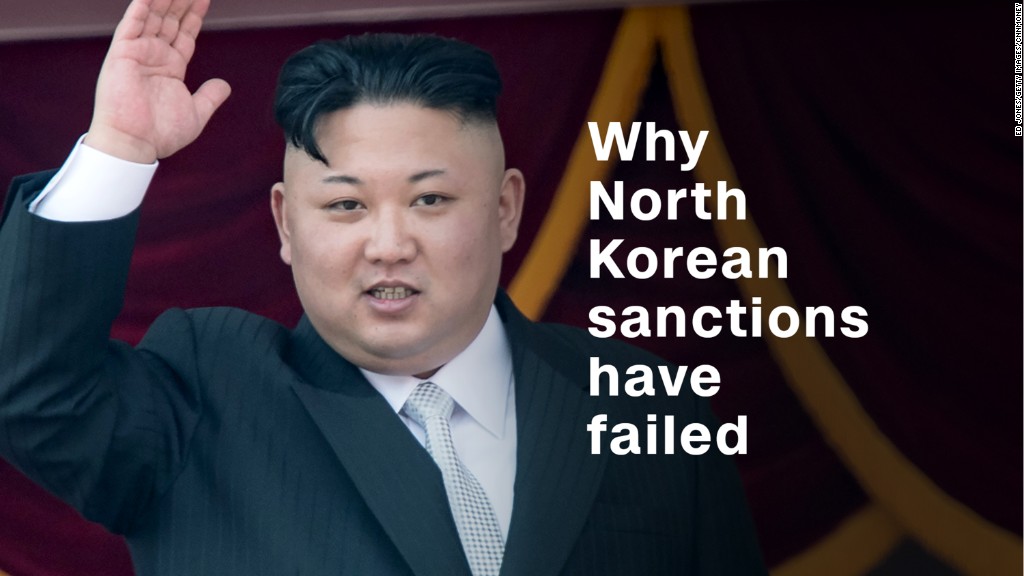
Singapore Airlines changed a flight route between Asia and the U.S. earlier this year because of fears over North Korean missile launches.
A spokesperson for the airline told CNNMoney on Wednesday that it rerouted its daily flights between the South Korean capital Seoul and Los Angeles after a North Korean missile launch in July. It hadn't previously announced the changes before this week.
Flight paths in the region are drawing attention after two other Asian carriers said that some of their pilots believe they saw another ballistic missile North Korea tested last week.
Cathay Pacific (CPCAY) said the crew of a flight from San Francisco to Hong Kong reported seeing what they thought was the missile re-entering Earth's atmosphere on November 29. Korean Air said the pilots on two of its flights bound for Seoul "saw a flash and everyone is assuming it should be the missile because of the timing."
Related: Cathay Pacific crew saw North Korean missile from plane, airline says
North Korea fired what is believed to be the biggest and most powerful missile in its arsenal that day. Pyongyang said the projectile flew as high as 4,475 kilometers (2,800 miles) before plummeting down into waters off the western coast of Japan.
Singapore Airlines (SINGF) said its flights don't travel "in the vicinity of the missile trajectory" because of the route change it made to avoid the northern part of the sea between the Korean peninsula and Japan.
The Cathay plane didn't travel over that part of the sea either, according to flight tracking data. The airline said that its flight was "far from the event location" and unaffected by the missile -- but that the crew reported the sighting to air traffic control in Japan in line with procedures.
"We have been in contact with relevant authorities and industry bodies as well as with other carriers. At the moment, no one is changing any routes or operating parameters," Cathay said. "We remain alert and review the situation as it evolves."
Korean Air didn't provide details of the flights that saw the "flash," or say where they were at the time of the event.
Singapore's route change in July came after an Air France (AFLYY) flight passed just east of the splashdown site of a North Korean missile test, roughly five to 10 minutes before the weapon hit the water.
At the time, U.S. Defense Department spokesman Jeff Davis warned that the missile North Korea "flew through busy airspace used by commercial airliners."
Related: North Korean missile tests could pose a risk to passenger planes
Guidelines issued by the International Civil Aviation Organization, a U.N. agency tasked with governing air safety, state that nations have the "responsibility to issue risk advisories regarding any threats to the safety of civilian aircraft operating in their airspace."
South Korea says Pyongyang regularly fails to issue notices to airmen when conducting missile launches. Such notices are issued to warn pilots and airlines of potential risks during their flights.
The chances of a plane being struck randomly by a missile are "billions to one," according to CNN aviation safety analyst David Soucie.
-- Rebecca Wright and Joshua Berlinger contributed to this report.
